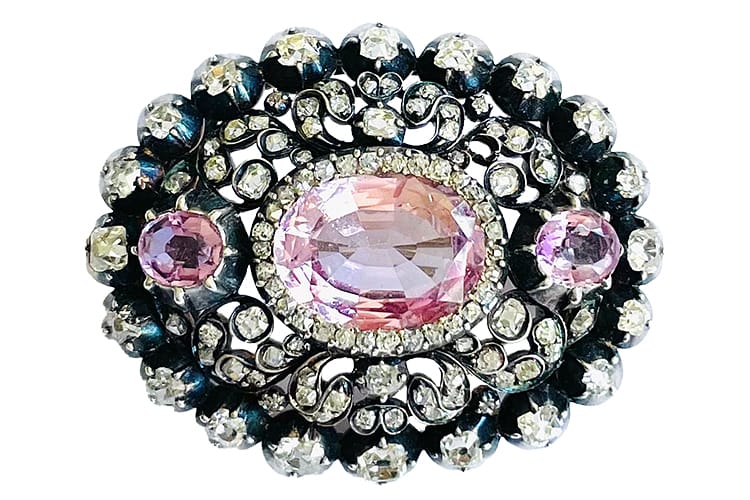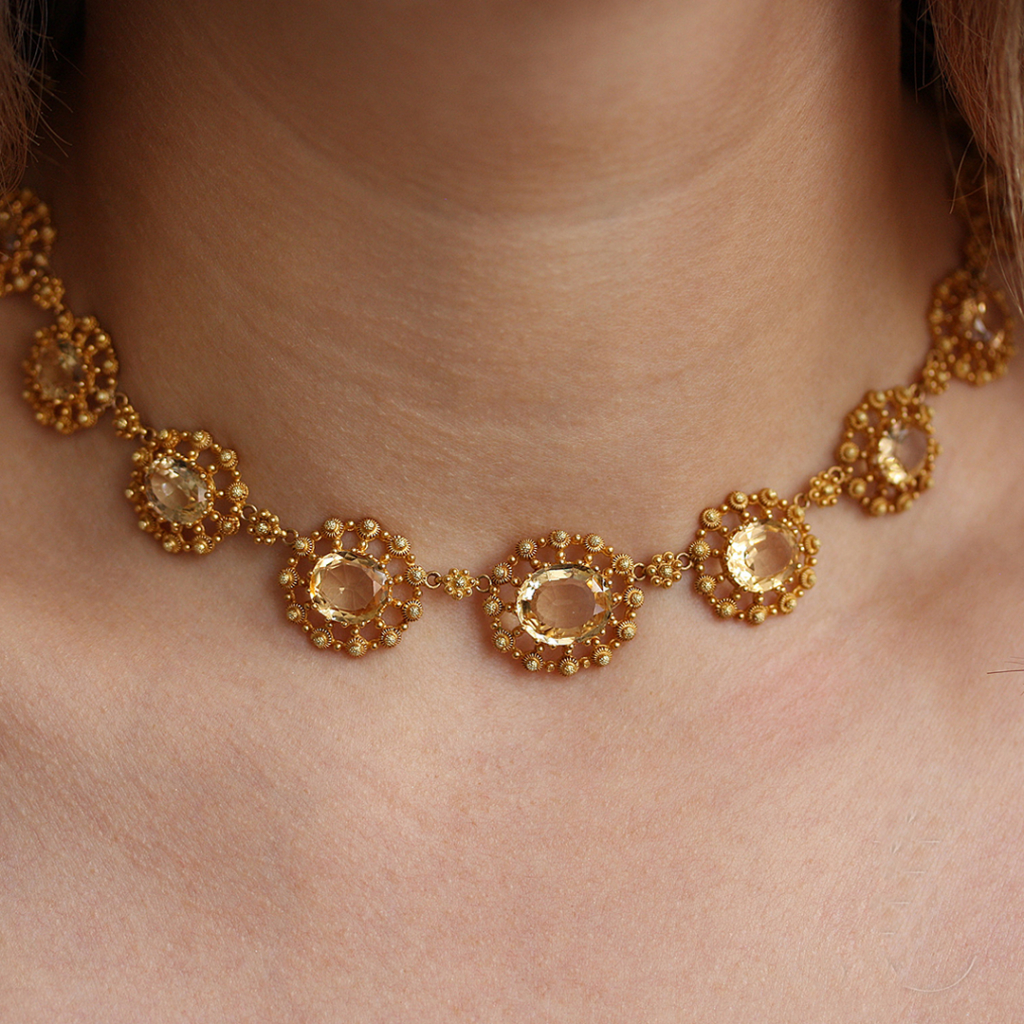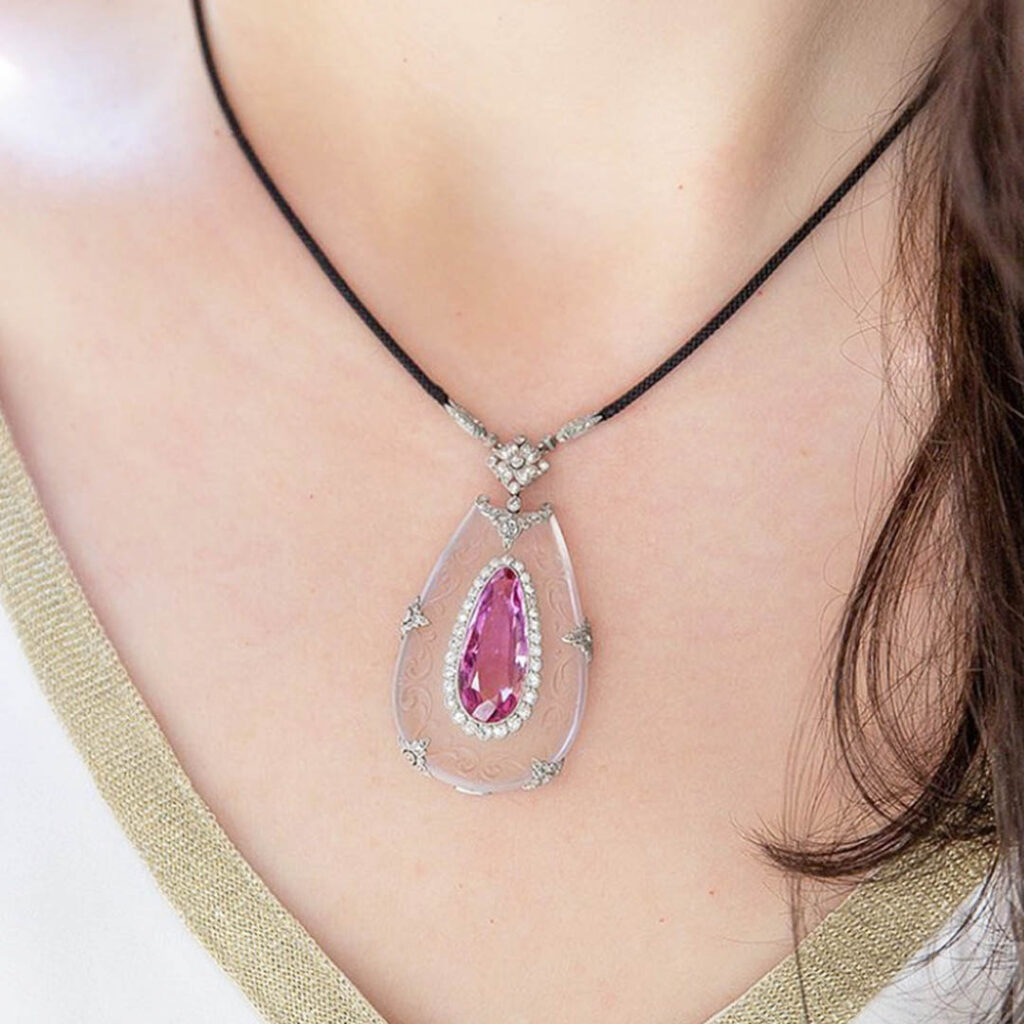The History of Precious Topaz

Topaz, in its myriad colors, has been in and out of fashion since the days of the ancient Egyptians, who believed it got its yellow color from the sun God Ra. The gem was particularly popular in the Georgian, Victorian, and Edwardian eras, which was most of the 1700s through the early 1900s. The most prized color of this gem was pink and peach, yellow, orange, or golden brown, which is known as imperial topaz. While topaz comes in many other colors, since these are the colors found in vintage jewelry we’ll focus on those hues.
It was during the Georgian era — named after the four King Georges and a William who ruled England from 1714 through 1837 – that topaz really came into favor. During the 1700s, there was a big discovery of topaz in Brazil, where there were many Portuguese settlers and explorers. The rough topaz was sent to Portugal to be cut into gemstones that were used in jewelry throughout Europe.

18 imperial topaz set in an 18-karat gold necklace featuring cannetille and granulation, French, circa 1840, courtesy Inez Stodel (@inezstodel_jewelry).

Pink topaz, carved rock crystal, diamond and platinum pendant on a black cord, circa 1910, courtesy Galerie Montaigne (@galerie_montaigne).
Pink Topaz
In nature, pink topaz gets its color from the presence of the element chromium. The natural color pink topaz is very rare and can be quite pale, so jewelry makers often use red foil backings to amp up the color of the stones. During that time, gems were generally set in closed-back mountings which allowed the color to reflect through the stone. Another reason pink topaz was popular in the Georgian, Victorian, and Edwardian days was because they looked particularly beautiful in candlelight, which was the main source of light at that time. Topaz tends to be clear with few to no eye-visible inclusions so between the clarity of the gem and the way it refracts light the stone looks really good in low-light situations.
Imperial Topaz
Pink topaz is not the only topaz in town, imperial topaz, which ranges from pink to peach and orange to golden brown is also found in antique or vintage jewelry. Imperial Topaz is also quite rare. It got its name from a find made in the Ural Mountains of Russia during the 1800s. The czars owned the mines and so the stone became known as imperial topaz because the gems were reserved for use by the royal family exclusively. The largest pink topaz weighing in at a hefty 79 carats was found in the Russian mines.
Topaz rates an 8 on the Mohs scale of gemstone hardness making it a stone that is durable enough for everyday wear. It’s important to note that one must be careful when cleaning vintage jewelry with a topaz (although this applies to non-vintage topaz as well). It is essential to avoid heat or chemicals as they can damage the stone or change its color. Instead, clean your topaz jewelry with lukewarm water and mild soap. Dry with a soft cloth.
When the white-on-white look of platinum and diamonds became the height of fashion in the very late 1800s and early 1900s, topaz remained a favorite as it made a beautiful focal point of soft color, adding another design element to the jewel. If you love topaz, look for beautiful pieces of vintage jewelry that showcase this gem. You’ll not only have a rare gemstone but also a unique piece of jewelry that will express your personal style.
Source: International Antique Jewelers Association, authored by Amber Michelle.
Featured image (top of page): Victorian silver on gold brooch features three pink topaz with old mine diamonds weighing 3.5 carats, courtesy Ernst Faerber (@ernstfaerber).